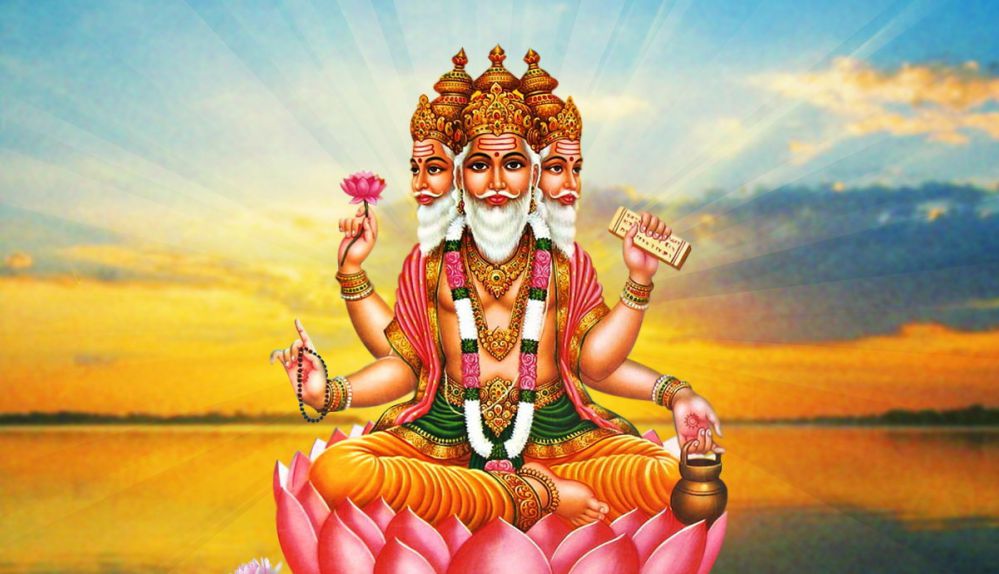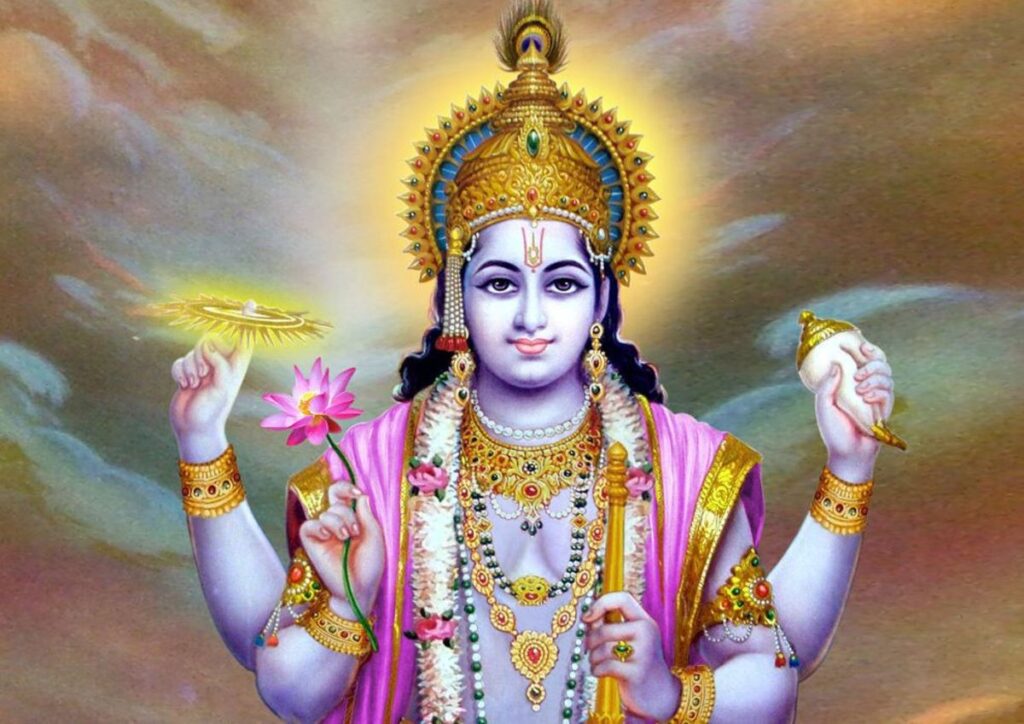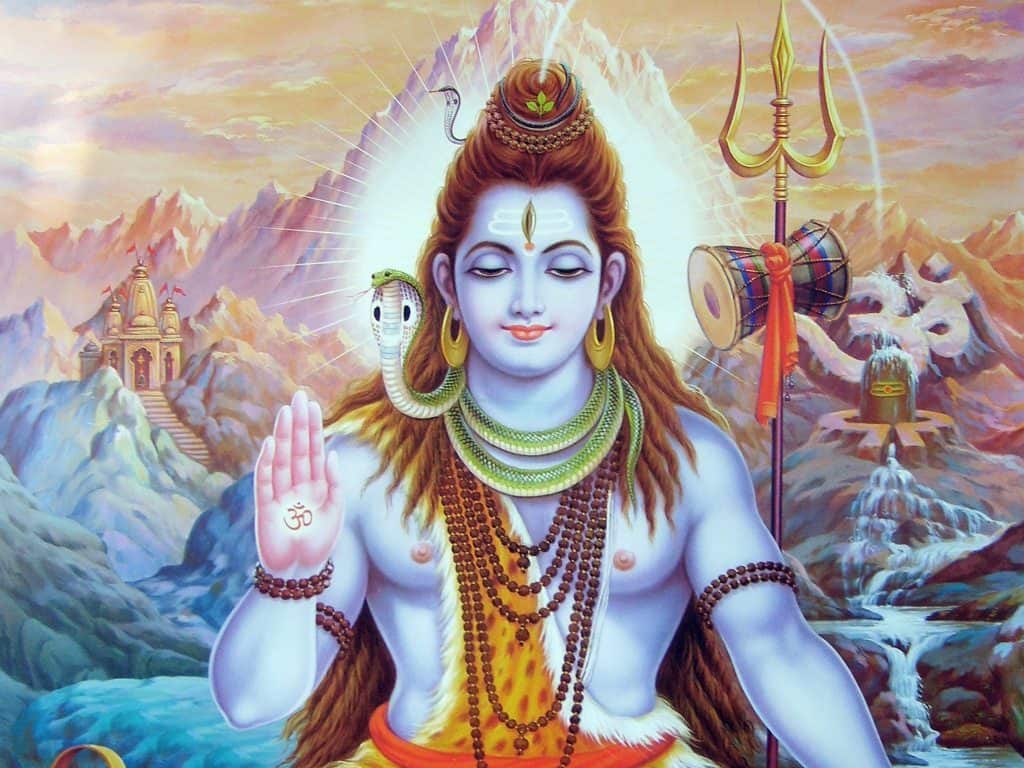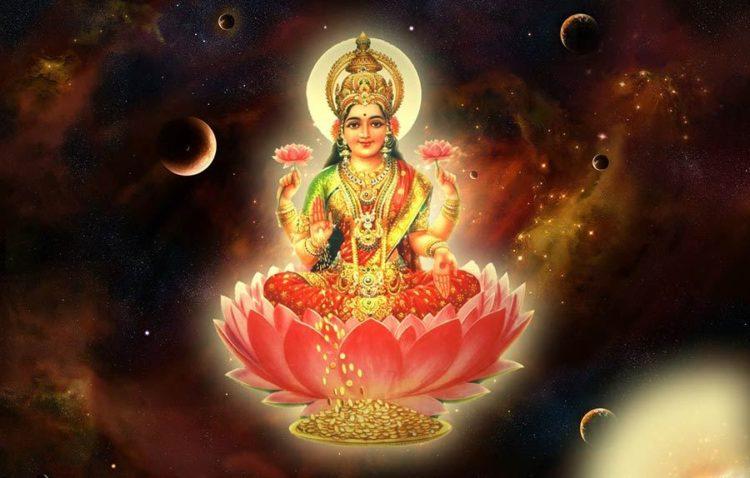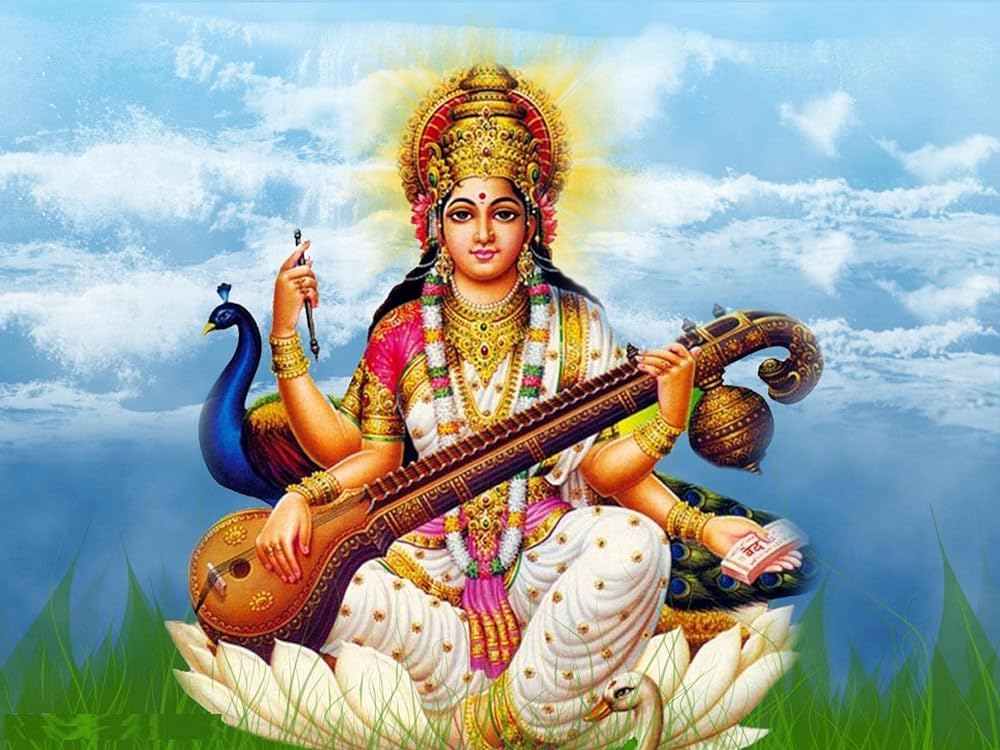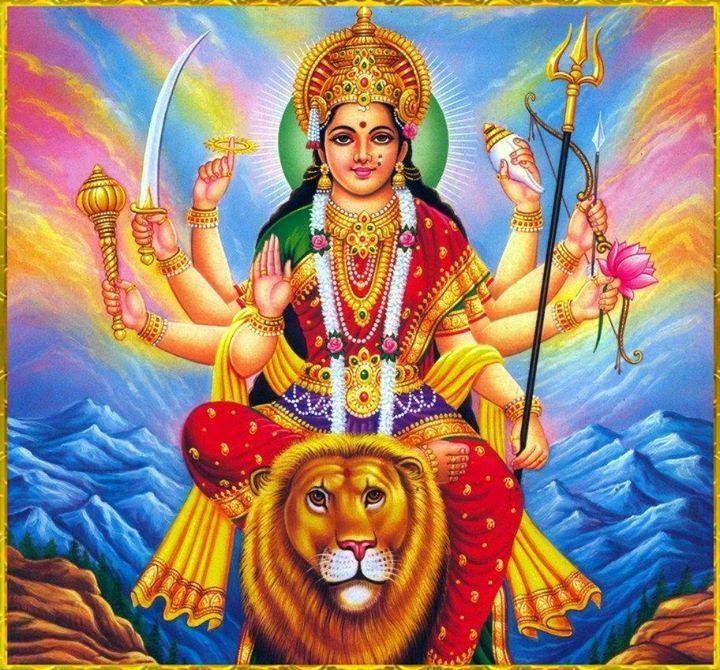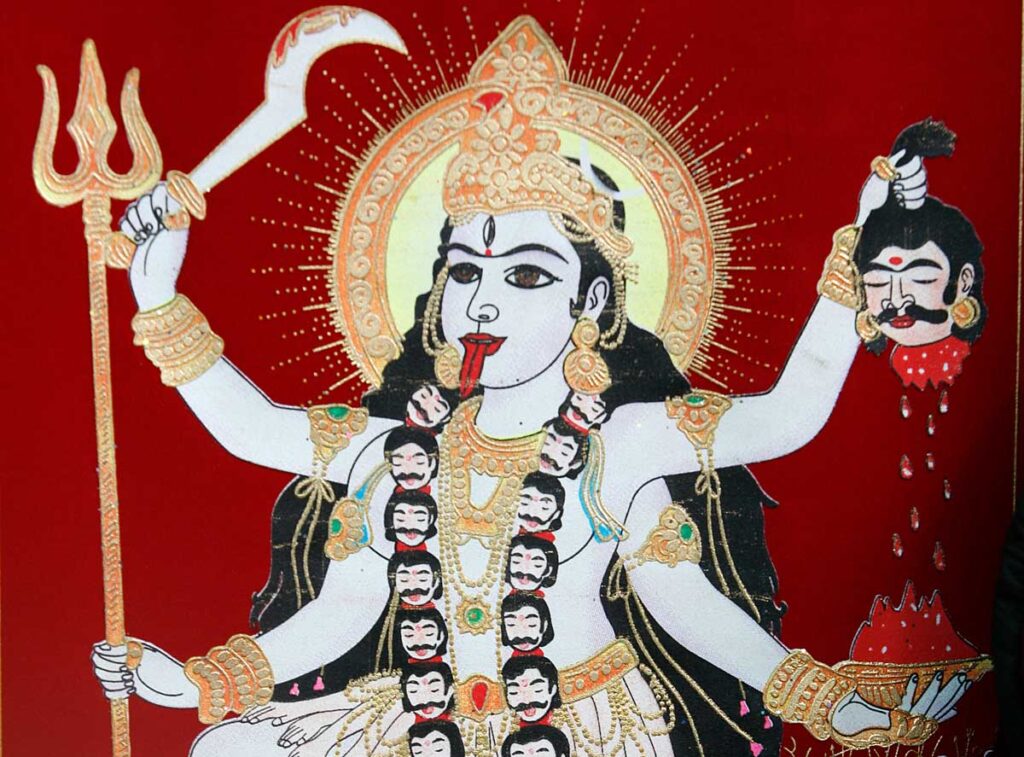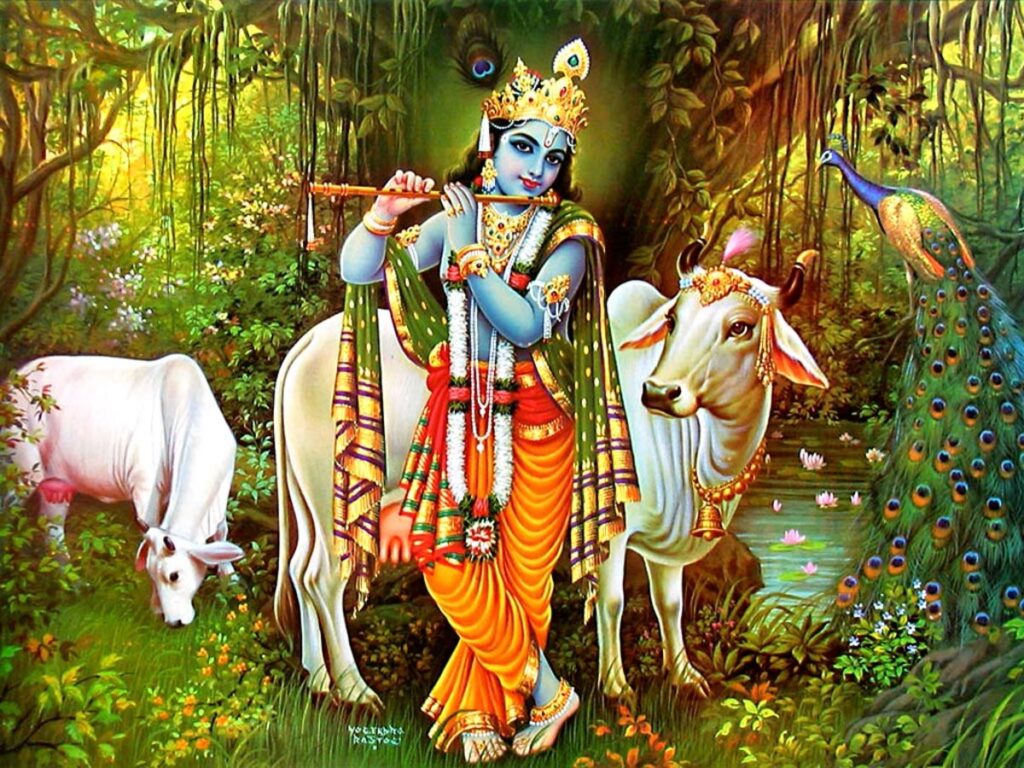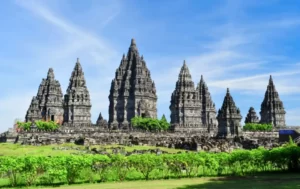Welcome to the captivating world of Hindu gods, where divinity takes on myriad forms, each symbolizing unique aspects of life and the universe.
In Hinduism, gods are not just distant celestial beings but are integral to the daily lives and spiritual journeys of millions. These deities range from creators and preservers to destroyers, from providers of wealth to bestowers of knowledge, each playing a distinct role in the cosmic dance of existence. As we explore the 10 most important Hindu gods, we’ll dive into a realm where myth meets meaning, and stories are more than just tales—they are profound teachings that continue to guide the lives of followers around the globe.
1. Brahma
Brahma is one of the most intriguing and important deities in Hinduism, often referred to as the Creator God within the Trimurti, the Hindu Trinity that also includes Vishnu the Preserver and Shiva the Destroyer. This framework of creator, preserver, and destroyer gods helps followers understand the continuous cycle of creation, preservation, and dissolution in the universe.
Brahma is typically depicted with four heads and four arms, with each head continuously reciting one of the four Vedas, which are the oldest and most authoritative scriptures in Hinduism. This imagery symbolizes his all-seeing, all-knowing nature, and his connection to the divine knowledge and the universe’s creation. His four arms typically hold a book, a rosary, a water-pot (kamandalu), and a spoon, which signify the tools needed for creation and knowledge.
The importance of Brahma in Hinduism extends beyond his role as the universe’s creator. He is seen as the source of all knowledge necessary for the universe to function.
However, in comparison to Vishnu and Shiva, Brahma does not enjoy a prominent place in popular worship. There are very few temples dedicated to Brahma worldwide, with the most famous one located in Pushkar, Rajasthan, India. This relative scarcity in worship can be attributed to various myths and stories that suggest Brahma’s decreasing role in everyday affairs of the cosmos after the act of creation.
Moreover, Brahma’s role as the progenitor of the human race and all living beings establishes him as a fundamental figure in cosmogonical contexts, making him a cornerstone in understanding the creation myths within Hindu theology. Despite his lesser role in daily worship, his contribution to the intellectual and spiritual framework of Hindu thought is undeniable, providing a cosmic viewpoint on the birth and structure of the universe. This makes Brahma not just a god of creation but also a symbol of the inception of life and wisdom in the universe.
2. Vishnu
Vishnu is one of the principal deities of Hinduism and forms a part of the holy trinity, or Trimurti, alongside Brahma the Creator and Shiva the Destroyer. His role as the Preserver or the Protector is central to his worship and the philosophical narratives within Hinduism.
Visually, Vishnu is often depicted as a blue-skinned figure with four arms, each holding symbolic items: a conch shell (shankha), representing the divine sound that originates creation; a discus (chakra), symbolizing the mind; a lotus flower, an example of glorious existence and purity; and a mace (gada), indicative of individual existence and power.
Vishnu is also commonly shown lying on the cosmic serpent Shesha, signifying calmness and eternity, floating on the ocean of the changing world, suggesting his role in maintaining balance and peace.
The importance of Vishnu in Hinduism cannot be overstated due to his role as the sustainer of the universe. Whenever balance is disrupted, and evil outweighs good, Vishnu is believed to descend in various forms, known as avatars, to restore the equilibrium.
Among his most famous avatars are Rama and Krishna, both central figures in major Hindu epics like the Ramayana and the Mahabharata. These stories not only serve religious and moral instruction but also are integral cultural touchstones that influence various aspects of life in Hindu societies.
Furthermore, the worship of Vishnu involves numerous festivals and rituals, some of which are among the most important in the Hindu calendar, such as Ram Navami, Krishna Janmashtami, and Vaikuntha Ekadashi. This worship is not just about celebrating his deeds but also about instilling his values of protection, mercy, and goodness in human life.
Vishnu’s role extends beyond just protector and includes a deeper philosophical layer about the nature of life and the universe. His constant efforts to maintain cosmic order reflect the Hindu worldview of an eternal cycle of birth, death, and rebirth, over which Vishnu presides, ensuring the universe remains a coherent and orderly system. This makes him an indispensable figure in the spiritual and daily lives of his devotees.
3. Shiva
Shiva, one of the principal deities of Hinduism, holds a unique position in the divine triad of the Trimurti, alongside Brahma the Creator and Vishnu the Preserver. Known as the Destroyer, Shiva’s role is complex, embodying themes of destruction that are ultimately tied to renewal and regeneration—a necessary part of the cycle of existence in the universe.
Shiva is often depicted with ash-smudged skin, long matted hair, and a third eye on his forehead. This third eye represents the all-seeing wisdom and insight that transcends ordinary perception. He is typically shown with a trident (trishula) in his hand, a drum (damaru), and wearing a garland of skulls, signifying the cycle of birth and death. Additionally, the river Ganges is believed to flow from his hair, symbolizing his role in sustaining life. Shiva is also frequently depicted sitting in meditation on Mount Kailash or dancing the Tandava, the dance of creation and destruction.
The significance of Shiva in Hinduism extends far beyond his destructive power. He is also seen as the epitome of asceticism and the patron god of yoga, meditation, and arts. This combination of roles makes Shiva not only a god of death and destruction but also a symbol of morality, self-control, and the rhythm of life and death. His followers, known as Shaivites, are particularly devoted to his worship, practicing rituals and celebrations that honor him in various forms and avatars, such as the fierce Bhairava or the benign Shankara.
One of the most important festivals dedicated to Shiva is Maha Shivaratri, the great night of Shiva, which celebrates his cosmic dance of creation, preservation, and destruction. The festival not only honors his role in the universe’s cycle but also his grace in saving the world from poison during the churning of the ocean, another story highlighting his protective, benevolent qualities.
4. Lakshmi
Lakshmi, the Hindu goddess of wealth, prosperity (both material and spiritual), light, wisdom, fortune, fertility, generosity, and courage, is a central figure in Hindu mythology and worship. As the consort of Vishnu, one of the principal deities of Hinduism and part of the holy trinity of gods, Lakshmi also plays a pivotal role in the maintenance of the universe alongside her husband.
Lakshmi is most often depicted as an elegant and radiant woman, adorned with fine gold and precious gems, sitting or standing on a lotus flower. This symbolism is powerful, as the lotus represents purity and spiritual power, thriving in muddy waters without being tainted. She typically has four hands, representing the four ends of human life: Dharma (righteousness), Artha (wealth), Kama (desires), and Moksha (liberation from the cycle of life and death). In each hand, she holds lotuses or a pot of gold, pouring out coins, signifying her role as a dispenser of wealth and prosperity.
Her importance in Hinduism extends beyond material wealth. Lakshmi is seen as a motherly figure who offers wealth in its 16 forms, including knowledge, strength, valor, and victory. She ensures that her devotees are not just affluent but also virtuous, wise, and successful in their endeavors.
Lakshmi’s worship is particularly highlighted during the festival of Diwali, the festival of lights, which is one of the most important and widely celebrated festivals across India and in Hindu communities worldwide. During Diwali, Hindus clean their homes and light lamps to invite Lakshmi in, seeking her blessings for a prosperous new year. This ritual underscores her role as a bringer of light in addition to wealth, emphasizing her significance in renewing life and promoting spiritual as well as material growth.
Furthermore, Lakshmi’s continuous association with Vishnu in his various incarnations (avatars), including Rama and Krishna, reinforces her role in Hindu mythology as not just the goddess of wealth but also a symbol of beauty, purity, and domestic harmony. Her presence is essential to the cosmic duties of Vishnu, as she provides the resources needed for his role as the preserver of the universe.
5. Saraswati
Saraswati, the Hindu goddess of knowledge, music, art, wisdom, and learning, is one of the most revered and iconic figures in Hindu mythology.
She is part of the trinity (Tridevi) of Saraswati, Lakshmi, and Parvati, each goddess associated with a member of the Trimurti (Brahma, Vishnu, and Shiva). Saraswati is the consort of Brahma, the creator, which aligns her with the creative and knowledge-based aspects of the universe.
Saraswati is traditionally depicted as a beautiful woman dressed in pure white, often seated on a white lotus, which symbolizes light, knowledge, and truth.
She typically has four arms which hold items with symbolic meanings: a book (the Vedas, representing the universal, divine, eternal, and true knowledge), a mala (rosary, representing the power of meditation and spirituality), a water pot (purity and purification), and a musical instrument (usually a veena, representing the arts and sciences). These items collectively highlight her functions as a patron of the arts, purveyor of knowledge, and a figure of serene contemplation.
The importance of Saraswati in Hindu culture is immense, as she represents the intellectual and spiritual aspects of existence. Students, teachers, scholars, and artists of all kinds honor her to seek her blessings in their respective fields.
Saraswati Puja, often celebrated during the spring festival of Vasant Panchami, is a key event dedicated to her. During this festival, people, particularly students and educators, worship her to gain wisdom and creativity. Schools and educational institutions participate in special prayer ceremonies, and young children often start learning to write their first words during this auspicious occasion.
The goddess’s role extends beyond mere academic and artistic pursuits. Saraswati’s influence encompasses the spiritual growth of individuals, aiding them in understanding the higher purpose of life and transcending worldly limitations through the acquisition of true knowledge. In this way, Saraswati is seen not only as a giver of wisdom but also as a guide to the inner self, encouraging enlightenment and the betterment of the mind and spirit.
Thus, Saraswati holds a fundamental place in Hindu worship as the guardian of the flow of wisdom and consciousness. Her presence is crucial for fostering learning environments and cultural pursuits that are vital to the development of society and individual growth. Her worship underscores the value placed on knowledge and arts in Hindu culture, making her an enduring symbol of all forms of learning and intellectual progress.
6. Durga
Durga is a formidable and revered goddess in Hinduism, known primarily for her strength and protective, maternal nature. She embodies empowerment and the triumph of good over evil, making her an important figure in Hindu worship and mythology.
Visually, Durga is depicted as a majestic warrior goddess with multiple arms—commonly eight or ten—each wielding a different weapon, given to her by various gods. These weapons symbolize the manifold powers of the universe she possesses and her capability to combat forces of evil. She is often shown riding a lion or a tiger, symbolizing her mastery over power, will, and determination. Her appearance itself is a symbol of invincibility, inspiring devotees to strive for strength and virtue in their own lives.
The significance of Durga in Hindu culture can be primarily observed during the festival of Navaratri, a nine-night festival that is one of the most important and widely celebrated across India and in Hindu communities worldwide. During Navaratri, each night is dedicated to a different aspect of Durga, celebrating her many achievements and stories, particularly her victory in battle against the buffalo demon Mahishasura. This victory is not just a physical one but also symbolizes the victory of virtue over vice, light over darkness, and wisdom over ignorance.
Durga Puja, the last five days of Navaratri, specifically focuses on worshiping Goddess Durga. This festival brings together communities in large-scale celebrations involving intricate rituals, dance, music, and artistic decorations. Durga Puja emphasizes themes of protection, righteousness, and the destruction of negativity, reinvigorating devotees with spiritual cleansing and moral fortitude.
Beyond the celebratory aspect, Durga represents a protective, forceful energy in the Hindu psyche, providing believers with the courage and strength to face their own life challenges. She is often prayed to for protection and strength in difficult times, and many consider her a universal mother, watching over and guiding her devotees with maternal care.
7. Kali
Kali, often depicted as a fierce and powerful goddess, holds a significant place in Hindu mythology. She is known as the goddess of time, creation, destruction, and power. Kali’s stark and dramatic imagery and her role in Hinduism serve as symbols of the cycle of birth, life, death, and rebirth.
Visually, Kali is unique and easily recognizable: she is typically shown with a dark or even black complexion, representing the void from which everything in existence is born and into which it will ultimately dissolve. Kali is often depicted with four arms, each holding symbolic objects—a sword, a trident, a severed head, and a bowl or skull-cup catching the blood of the severed head. These items signify her role as a destroyer of evil. She wears a garland of severed heads and a skirt of dismembered arms, emphasizing her battlefield victories. Her tongue is usually shown hanging out, which symbolizes her consuming the sins of the world.
Kali’s importance in Hinduism extends far beyond her fearsome appearance. She embodies the transformative power of destruction; her destruction is not random but purposeful, clearing away the illusions and egos that hinder spiritual growth and making way for a new creation. She forces her followers to confront their own mortality and the temporary nature of the physical world, guiding them towards the realization of the eternal soul and spiritual liberation (moksha).
Kali is particularly venerated in Eastern India and is a central figure in the festivals like Kali Puja, which is celebrated with great fervor in regions such as West Bengal. This festival coincides with Diwali, where while much of India worships Lakshmi, the goddess of wealth, many Bengalis honor Kali, seeking her blessings for protection from evil and for strength.
Moreover, Kali’s role as a mother figure, though seemingly paradoxical given her fearsome iconography, is crucial. She is often referred to as the benevolent mother goddess to her devotees, a protector who is fiercely loyal and nurturing to those who seek her guidance and worship sincerely.
8. Krishna
Krishna is one of the most cherished and revered gods in Hinduism, known for his charisma, divine playfulness, and profound philosophical teachings. He is considered a full avatar (incarnation) of Vishnu, the preserver god of the Hindu trinity. His stories are primarily detailed in the epic scriptures of the Mahabharata and the Bhagavad Gita, as well as the playful and poetic accounts in the Bhagavata Purana.
Krishna is often depicted with blue skin, wearing a peacock feather in his hair and playing the flute. His iconography represents divine joy and the power of divine music, which is capable of enchanting the hearts of all beings, drawing them closer to spiritual truth. He is usually shown in the idyllic landscape of Vrindavan, where he spent his youth playing with the cowherds and cowgirls (gopis), symbolizing the blissful, innocent, and loving nature of the divine.
Krishna’s importance in Hinduism can be attributed to his role as a teacher and a protector. In the Bhagavad Gita, a 700-verse Hindu scripture that is part of the epic Mahabharata, Krishna imparts spiritual wisdom to the prince Arjuna, who is confused and morally troubled on the battlefield. Krishna’s teachings to Arjuna form a comprehensive guide for living a righteous life and addresses the duties and responsibilities of an individual within the framework of dharma (moral law) and spirituality. His discourse includes a broad range of spiritual concepts, such as karma (action), bhakti (devotion), and yoga (the path to realization).
Krishna is also celebrated in the festival of Janmashtami, which marks his birthday and is one of the biggest religious celebrations across India. Devotees fast, sing, dance, and stay up until midnight to honor the moment of his birth. The festival not only celebrates his earthly appearance but also serves as a time of introspection and renewal of one’s faith and spiritual commitments.
Moreover, Krishna’s playful and loving interactions with the gopis, and especially with Radha, his beloved, are seen as symbolic of the soul’s intense longing and love for the divine. These stories serve to illustrate the joy and sweetness of devotional surrender to God, making Krishna a central figure in devotional (bhakti) movements throughout India.
9. Rama
Rama, a major deity in Hinduism, is revered as the model of virtue and the ideal man. He is considered the seventh avatar of Vishnu, embodying the characteristics of a perfect son, a devoted husband, a loyal brother, and a righteous king. His life and adventures are primarily recorded in the ancient Indian epic, the Ramayana, one of Hinduism’s most beloved and enduring texts.
Visually, Rama is typically depicted as a handsome and regal figure, with a bow and arrows, indicative of his prowess as a warrior and his role as a protector. He is often shown in the company of his wife Sita, his loyal brother Lakshmana, and his devout follower Hanuman, a monkey god. This imagery not only portrays him as a central figure of virtue and bravery but also emphasizes the importance of family, loyalty, and devotion in his story.
The significance of Rama in Hinduism lies in his life’s narrative, which exemplifies the path of Dharma, despite harsh tests of life. His story includes his unjust exile from his kingdom, the abduction of his wife Sita by the demon king Ravana, and his quest to rescue her, culminating in the epic battle in Lanka. Rama’s journey is not just a heroic adventure but also a moral epic about the virtues of duty, righteousness, and the pursuit of truth.
Rama’s importance is celebrated annually in the festival of Diwali, known as the Festival of Lights, which marks his victorious return to his kingdom after 14 years of exile and the defeat of Ravana. Diwali is a major Hindu festival celebrated with fireworks, lamps, and decorations, symbolizing the victory of light over darkness and good over evil.
Furthermore, Rama is considered a paragon of the virtues of an ideal ruler and a just individual. His rule (Ram Rajya) is often cited as the golden age of moral governance, making him a model for leaders and rulers. His story teaches the values of justice, the importance of family and loyalty, and the virtues of patience and endurance in the face of adversity.
10. Hanuman
Hanuman is a central figure in Hindu mythology, revered as a symbol of strength, perseverance, and devotion. He is a divine monkey god, known primarily for his unwavering dedication to Rama, one of the avatars of Vishnu, and his pivotal role in the epic Ramayana. Hanuman’s exploits in this epic have made him one of the most beloved deities in Hinduism.
Visually, Hanuman is depicted as a monkey-faced figure with a strong, human-like physique, often shown flying with a mountain in one hand as he leaps across the sky. This image refers to one of his most famous feats during the Ramayana, where he carried an entire mountain to deliver medicinal herbs to heal the wounded Lakshmana, Rama’s brother, demonstrating his superhuman strength and dedication.
The importance of Hanuman extends beyond his physical prowess; he is also celebrated as a figure of moral and spiritual excellence. His devotion to Rama is seen as an ideal example of dedication to duty and love for God. This unwavering faith and selfless service make him a symbol of the perfect devotee in Hinduism. His tales are told with admiration in various Hindu texts, not just the Ramayana but also in other cultural folk narratives and songs across India.
Hanuman is particularly worshipped by those who seek strength and protection in their lives. His blessings are sought for courage and safe travels, which is why images of Hanuman are often found in vehicles in India as a sign of security and good luck. Moreover, Hanuman is associated with the yogic practice, and his discipline and celibacy are often emulated by yoga practitioners who seek mastery over their bodies and minds.
The celebration of Hanuman Jayanti, his birthday, is another significant aspect of his worship, marked by intense prayer, religious processions, and the chanting of hymns dedicated to him. Devotees visit temples dedicated to Hanuman to pay homage, offering sweets and flowers, and applying sindoor (vermilion) to his statue, symbolizing a request for his blessings for strength and vitality.


